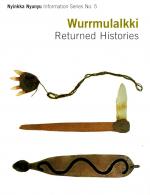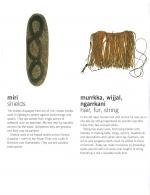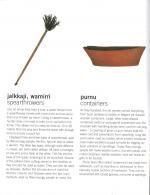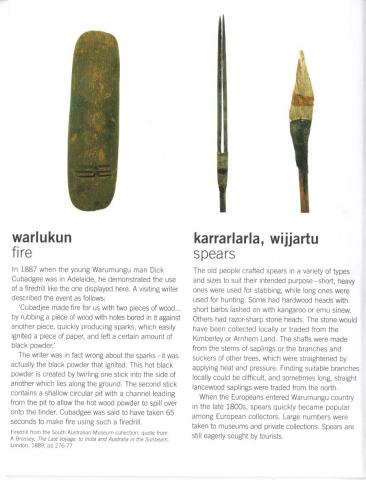Wurrmulalkki: Returned Histories (page 3)
warlukun (fire)
In 1887 when the young Warumungu man Dick Cubadgee was in Adelaide, he demonstrated the use of a firedrill like the one displayed here. A visiting writer described the event as follows: 'Cubadjee made fire for us with two pieces of wood...by rubbing a piece of wood with holes bored in it against another piece, quickly producing sparks, which easily ignited a piece of paper, and left a certain amount of black powder.' The writer was in fact wrong about the sparks - it was actually the black powder that ignited. This hot black powder is created by twirling one stick into the side of another which lies along the ground. The second stick contains a shallow circular pit with a channel leading from the pit to allow the hot wood powder to spill over onto the tinder. Cubadgee was said to have taken 65 seconds to make fire using such a firedrill.
South Australian Museum collection; quote from A. Brassey, The Last Voyage: to India and Australia in the sunbeam, London, 1889, pp 276-77
karrarlarla, wijjartu (spears)
The old people crafted spears in a variety of types and sizes to suit their intended purpose - short, heavy ones were used for hunting. Some had hardwood heads with shorts barbs lashed on with kangaroo or emu sinew. Others had razor-sharp stone heads. The stone would have been collected locally or traded from the Kimberley or Arhem Land. The shafts were made from the stems of saplings or the branches and suckers of other trees, which were straightened by applying heat and pressure. Finding suitable branches locally could be difficult, and sometimes long, straight lancewood saplings were traded from the north. When the Europeans entered Warumungu country in the late 1800s, spears quickly became popular among European collectors. Large numbers were taken to museums and private collections. Spears are still eagerly sought by tourists.








